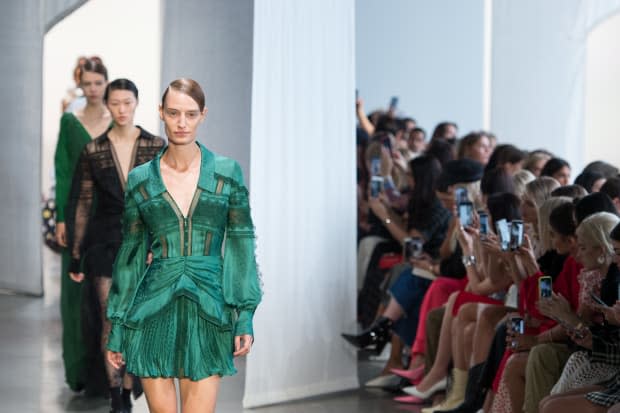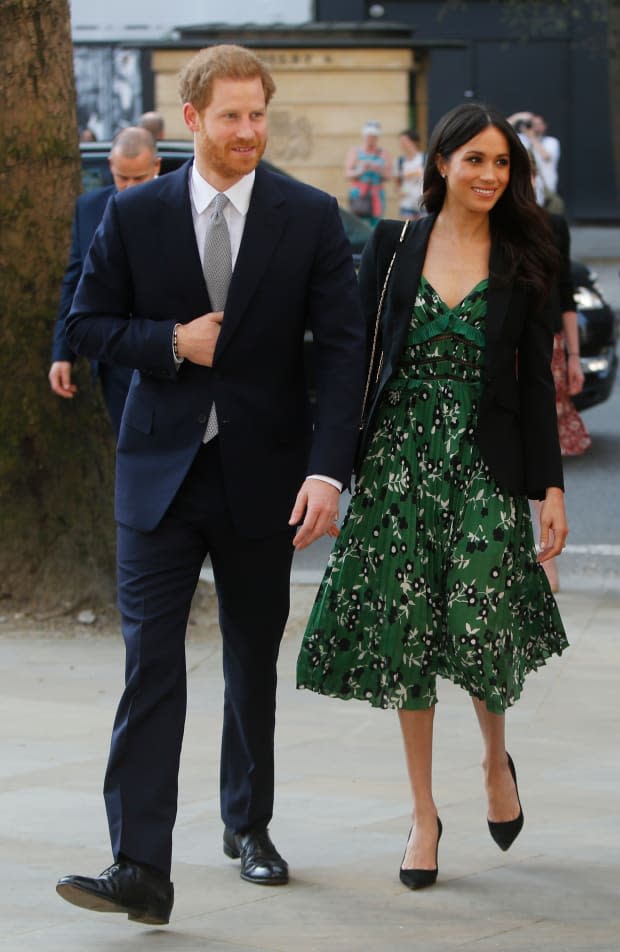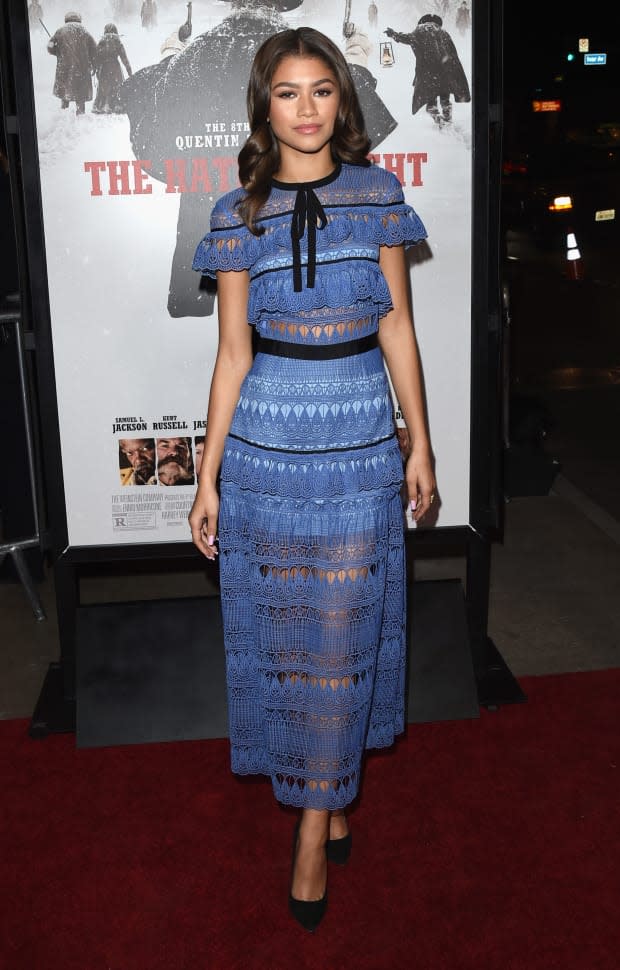Self-Portrait Is Growing in the Age of Streetwear — Without Flashy Logos or Sneakers
Since founding the brand in 2013, Han Chong has seen impressive growth in a tough market.

"I don't know if I'm lucky or I see things positively, and the past five years weren't easy, but I don't find them that difficult because I enjoyed doing it, so it's okay — it's fun!"
That's the answer Han Chong, founder and designer of the contemporary brand Self-Portrait, first gives when asked about the biggest challenges he's faced since launching his brand in 2013, but then the Malaysian expat, with his can-do attitude and generally positive outlook, thinks again on the question.
"I needed a visa to come here, and I got rejected for the visa a month before the presentation," Chong says about his first New York Fashion Week presentation back in 2015. "I was planning the whole show thinking I wouldn't be there, so that was a struggle."
In the end, Chong made it to his presentation, and what has followed is considerable growth in the three years since: Michelle Obama, Gigi Hadid, Olivia Palermo and Rachel McAdams are among the celebrities who wear Chong's label for red carpets, and influencers like Aimee Song — that gold standard in today's fashion environment — love it. (It's even got royal caché: Kate Middleton and Meghan Markle have both worn Self-Portrait on more than one occasion, publicity that's worth millions to any brand, but is especially valuable to a younger label like Chong's.)

So, how does a brand that doesn't have a viral, logo-stamped product like an Off-White belt or Gucci hoodie get so popular? How does a brand born in the age of streetwear and '90s nostalgia manage to grow, despite focusing on feminine lace dresses and ruffles?
Consistently making it onto major celebrity red carpets out of the gate helps, as Self-Portrait did, but Chong attributes the success to a right place-right time combination of launching wearable dresses at a relatively affordable price point, with a bit of help from social media marketing. When Chong launched Self-Portrait in 2013, the contemporary market was less congested than it is today. At the time, retailers wanted Chong to attach a luxury price point to his styles, something at odds with Chong's ideas about what his brand should be.
"At that time, there was literally no contemporary brand in that price point, and no one wanted to take me on, because 'it's too cheap,' they said, and they didn't know how to position you," Chong tells Fashionista. "Like Net-a-Porter or Selfridges, they said, 'Can you just make it more expensive? I like your design, but your price is too cheap.'"
"All the designers design for really rich people; rich people already have people designing for them," Chong continues. "I just wanted to have pieces for everybody."

The Self-Portrait fanbase, especially among the American celebrity set, is now widespread. A by-no-means, exhaustive tally of the celebrities who have worn the label (aside from the aforementioned) include: Lucy Hale, Reese Witherspoon, Kerry Washington, Kate Bosworth, Zendaya, Ellie Goulding and Beyoncé.
Where has all the celebrity and royal love landed Chong? In the three years since Fashionista first covered Self-Portrait, the brand has grown to be sold in over 350 retailers, including Selfridges, Net-a-Porter and Bergdorf Goodman. Chong opened the first Self-Portrait retail space in March in London. Its London office, which now has 35 employees, has grown by half in two years, and Chong has plans to expand Self-Portrait's physical presence into Japan and China next year. A Hong Kong office of 12 employees handles manufacturing.
Sales are spread almost evenly across the major luxury markets, with roughly 30 percent of business coming from America, 30 percent from Europe and 30 percent coming from Asia. Though the brand declined to provide any sales figures, it notes that 25 percent of business arises from Self-Portrait's online sales, and Chong said that there has been "100 percent growth, doubling consistently," every year. Finally, in partnership with Central Saint Martins (Chong's alma mater), Self-Portrait has launched a five-year scholarship program for five CSM students.

With that kind of growth and attention, it's hard not to think of Self-Portrait as an appealing takeover target for a larger fashion conglomerate — say, a Tapestry or Capri Holdings, both of which are competing to be the American fashion conglomerate. For now, though, Chong says he's not interested in Self-Portrait being acquired, nor does the brand need it.
"Throughout the years, quite a number of people have approached me on this subject, but I like to be in control in a lot of things," Chong says. "We don't have a financial cash flow problem, so we don't need that injection. I'm lucky that I'm able to do it independently because I can have all the control that I like — I'm a control freak."
For the time being, Chong's focused on continuing to grow his business organically, all the while remembering why he started Self-Portrait and where he comes from.
"I didn't come from a wealthy family or anything, so I appreciate everything, even the small things. I understand when a lot of people comment on Instagram and say, 'I dream of wearing your pieces one day,' even if they are not so expensive," Chong says. "We cannot take anything for granted."
